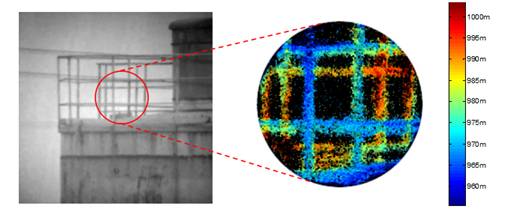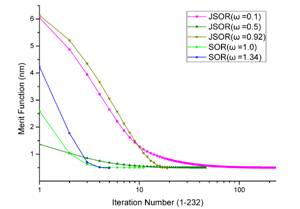Novel 3D Imaging LIDAR In China
A team led by LIU Bo from Institute of optics and electronics, Chinese Academy of Sciences (IOE, CAS) recently made breakthrough in 3D imaging area array LIDAR. They proposed the 3D imaging method combining dual-polarization modulation technology with adaptive range-gate firstly and the research results were published in IEEE Photonics Technology Letters and Applied Optics etc., and have been applied for patents for inventions.
LIU Bo’s team use high sensitive EMCCD as the area array detector and dual-channel high-speed electro-optic polarization modulation technology combined with adaptive range gate to achieve 3D imaging, break the limits that traditional scan imaging LIDAR cannot image long-distance moving target and overcoming the disadvantage of low resolution from APD array detector.
Dr LIU Bo said:“The novel method splits the returned radial into two beams by polarization modulation technology while imaging, so emitting laser pulse only one time can allow complete inversion reconstruction of the distance and obtain a frame of 3D imaging, with "flash" 3D imaging capability. It has potential to meet the requirements of 3D pattern recognition and morphological characteristics analysis of high dynamic targets. ”
"The LIDAR will play important role in space applications, such as spatial perception of distance and 3D shape measurement, or unmanned vehicle.” LIU Bo said,“currently,the LIDAR is still in the prototype phase, the volume of the whole system is larger. The next step, we will focus on improving the system performance and miniaturization.”
The figure below is the image of a rail outside the tower 1miles away. The Distance image 3D image of the rail is very clear, including inversion reconstruction and distant information.

a. Gray image of the Rail b. Distance image 3D image of the rail
3D image and the gray image ( Image by CHEN zhen)
Generalized Basic Iterative Methods for Absolute Measurement of Optical Flats
Higher level of optical testing is required with the rapid development of modern optical manufacture, especially in the lithographic objective lens system. It requires the surface figure to nanometer RMS even sub-nanometer RMS. The requirement of the surface in EUV lithography objective reaches 0.1 nm RMS, which is a great challenge for optical metrology.
One of the key technologies is the absolute test method, which involves multiple measurements using a plurality of probes, artefacts, and/or set-ups. Interferometric measurement of the surface form or figure of optical surfaces generally involves a comparison of the surface under test with a reference surface. For high-accuracy measurements, it is necessary to separate reference errors from test surface errors, especially when the reference errors have the same order magnitude as the test surface errors.
The researchers from Institute of Optics and Electronics developed a generalized method to reconstruct the surface figure based on reverse iterative optimization scheme. The proposed basic iterative methods are generalized; can correctly reconstruct absolute figures with pixel-level spatial resolution; are easy to understand and implement; and computationally efficient. It has been proved by both simulation results and experimental results.

Comparison of convergence rate for different iterative methods (Experimental results)
Contact: LIU Bo
E-mail:boliu@ioe.ac
(http://english.ioe.cas.cn/)
